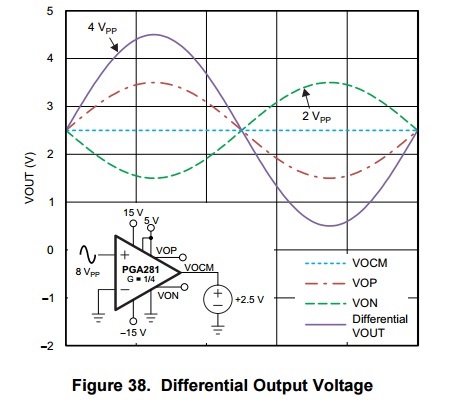Hello..
I am going to measure the voltage across shunt resistance with PGA280. In order to increase the Output voltage range I am planning to use PGA202 in cascade. I am unable to understand the output pins of PGA280.The output pins are as follows:
VOP: Noninverting Signal Output
VON:Inverting Signal Output
VOCM: Input,Output Common mode voltage
At which pin terminal I will get the differential output voltage ? What will be the role of VOCM and what i have to do with VOCM pin in cascade mode ?
Best Regards
Hassan.
-
Ask a related question
What is a related question?A related question is a question created from another question. When the related question is created, it will be automatically linked to the original question.



